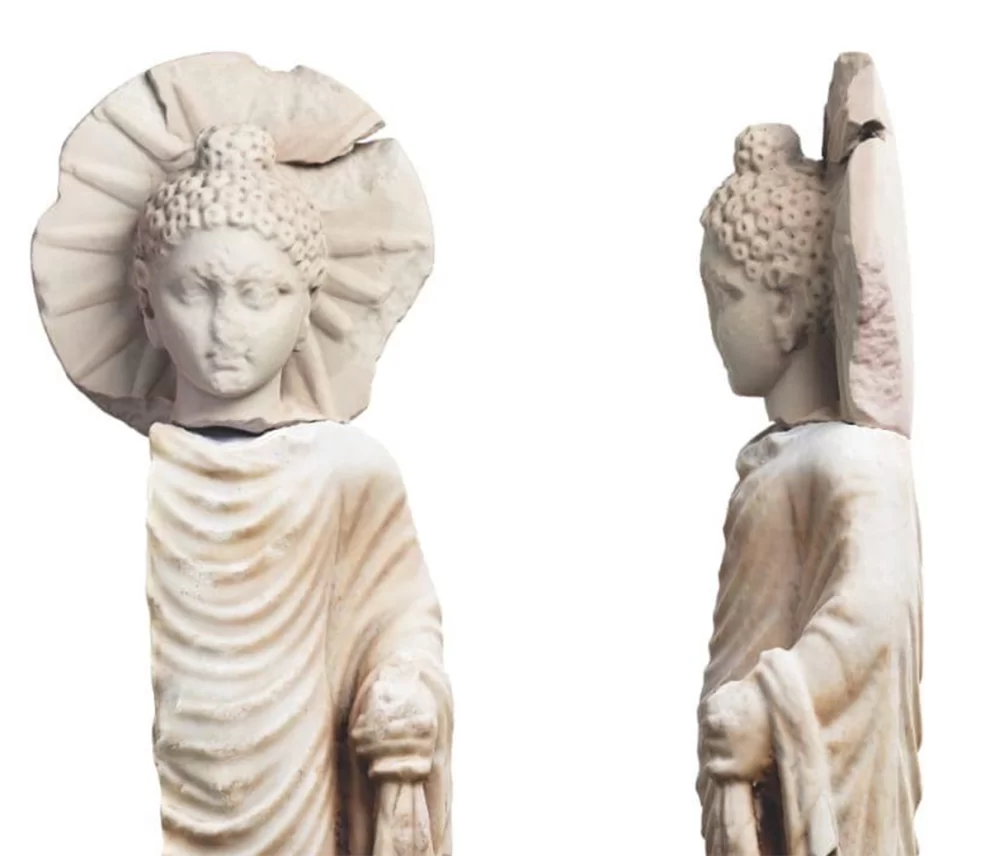A newly discovered marble statue of the Buddha at a temple in Berenike on the red sea shows a connection between Egypt and India during the Roman Empire.
The American-Polish archaeological mission excavating the main early Roman period temple (dedicated to the Goddess Isis) in Berenike uncovered in the forecourt of the temple a marble statue of the Buddha.
Mostafa Waziry, Secretary General of the Supreme Council of Antiquities, asserted that the newly discovered statue is striking evidence of trade between Egypt and India during the Roman Empire.
He added that Egypt was at the centre of a trade route that connected the Roman Empire with many areas of the ancient world, including India.
Waziri added that several Roman-era harbours on Egypt’s Red Sea coast engaged in commerce, the most important being Berenike.
Ships from India arrived with products – such as pepper, semi-precious stones, textiles and ivory – and offloaded them at Berenike, he stated.
The cargo was then carried on camels that conveyed the goods across the desert to the Nile, according to Waziri.
Other ships then transported the merchandise to Alexandria and from there to the rest of the Roman Empire, he said.
Mariusz Gwiazda, director of the Polish side of the mission, pointed out that the 71-centimetre-high statue depicts the Buddha standing and holding part of his clothing in his left hand. He added that a halo with sunrays surrounds the Buddha’s head, indicating his radiant mind, in addition to a lotus flower standing beside him.
Gwiazda also described the workmanship of the statue as exquisite, adding that it is considered to be the best evidence of Buddhism thus far excavated in Egypt.
“The Buddha statue was made from stone probably quarried from the region just south of modern Istanbul (Turkey) and it must have been sculpted locally at Berenike and dedicated to the temple by one or more rich merchants from India,” he said.
Steven Sidebotham, director of the American side of the mission, said that apart from this statue, archaeologists also found an inscription in Sanskrit dating to the Roman emperor Philip the Arab (244 – 249 CE).
He added that this inscription seems to belong to a different era from that of the statue of the Buddha (which dates back to a much earlier era).
Furthermore, the archaeologists also found other inscriptions in the same temple, according to Sidebotham. These inscriptions, which are in Greek, date from the early first century CE to 305 CE, he stated. They also found two second-century CE coins from the central Indian Kingdom of the Satavahanas inside the temple, according to Sidebotham.
Source: Ahram Online































